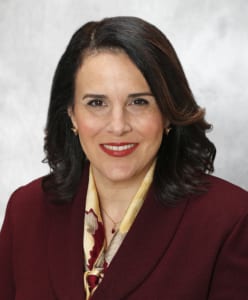Black Student Activists Are Sick and Tired of Talking. They Want Action.
It’s been three years since I turned my tassel to the left and threw my graduation cap in the air in commemoration of the end of an important chapter in…

It’s been three years since I turned my tassel to the left and threw my graduation cap in the air in commemoration of the end of an important chapter in my life, as well as four years of perseverance, fortitude, and activism alongside other Black student organizers across the U.S. who had demanded that our universities hire diverse faculty and staff, divest from campus police and prisons, and remove the names of academic entities founded on anti-Blackness. My experience taught me that while students can be a major force for racial progress — pushing higher education administrators to create safer, more inclusive, and anti-racist learning environments — change often comes slower than we would like.
In fact, many of the demands of Black students today are the same ones Black students made decades before. The difference now, amid a raging pandemic and police violence that are both disproportionately taking Black lives, is the level of disgust and anger among Black students, who are calling out their institutions and saying enough’s enough.
Many, like former University of Minnesota undergraduate student body president, Jael Kerandi, who recently led a successful effort to get her university to sever some contractual ties with the Minneapolis Police Department, say they’re done talking. Instead, they are marching on the quad, taking to the streets, and issuing concrete demands for action.
Ed Trust spoke with Kerandi, as well as Ohio State University undergraduate student body president, Roaya Higazi, who developed a list of demands calling for her university to break with the Columbus Police Department and condemn the anti-Black violence committed by police against OSU students and members of the local community. The two explained why it’s important for students to take a stand and how they got their respective administrations to listen. We also talked with UMN president, Joan Gabel, about her response to the student outcry, and asked OSU’s newly appointed president, Kristina Johnson, about her plans to address the current crises and concerns. Their replies have been edited for length and clarity.
Kerandi: “Our institutions are not excluded from American society and must do their part in being anti-racist. It was no longer OK for our institutions to evade or dance around the issues of race. Also, in this role [of student body president], I don’t get to walk into a room and separate myself from being a Black woman — that’s who I am. I understood I was in a position to make a change. I would have been remiss if I left this role and let all this slide.”
Higazi: “The student government at Ohio State has been very passive and when it came to issues like this — [which were] deemed as too political, so we kept out of it. But as a Black woman for the first time in this role, it was something I couldn’t allow to pass. We have Black students at our university. We owe them our solidarity and support. Our student government also capitalizes on the votes of Black students and students of color all the time, so we have to be prepared to stand for them when forces are hurting them.”
 Gabel: “We recognize our responsibility as the research, land-grant university, and the need to do more and do better. We also acknowledge the anger, pain, frustration, and concern felt within our community, around our campuses, and beyond. In recent weeks, we have been listening, learning, and engaging, as we seek to balance our collective wisdom with action to build a more equitable and just university.”
Gabel: “We recognize our responsibility as the research, land-grant university, and the need to do more and do better. We also acknowledge the anger, pain, frustration, and concern felt within our community, around our campuses, and beyond. In recent weeks, we have been listening, learning, and engaging, as we seek to balance our collective wisdom with action to build a more equitable and just university.”
Johnson: “Our work together in making The Ohio State University anti-racist and more inclusive is especially important at this critical juncture in our 150 years of existence. Though I am only in my first month as president, I have met with many students to listen to their concerns and acted — charging the Task Force on Racism and Racial Inequities to work with me to create an action plan to address the larger cultural issues of how our underrepresented populations are treated at OSU.”
Kerandi: “The issue of policing on campuses isn’t a new topic. It is something I had already brought up with our institution many times. This is why in my letter I say that I’m done talking, because, clearly, no one’s listening. At the end of the day, if our university administration has a diversity statement on its website, if they’ve taken time to put together all this racial justice work that they say they’re doing, and have an African American studies department, and say we’re inclusive, diverse, and so on, that is in no way in alignment with a police department that has a [habit] of murdering Black people. The American policing system is racist. We have no need for Minneapolis police on our campus. There’s no justification for it. In drafting the letter, I consulted a lot of people in and out of the student government and then added the letter as an agenda item for our executive cabinet meeting. In that meeting, I told them I will post this letter on my behalf and won’t put any of you in a position to make an ask you’re not ready for — but this needs to be said. My ask that the university not contract with the Minneapolis Police truly was the bare minimum.
“You know, I was listening to a segment by Angela Rye recently where she talked about the Declaration of Independence and [the right to] ‘life, liberty, and the pursuit of happiness.’ We’re stuck on life. It’s absurd that our country wants to politicize and make partisan something that is an inalienable right. Murder is nonpartisan.”

Roaya Higazi, Ohio State University undergraduate student body president.
Higazi: “On the day George Floyd was killed we were figuring out the role we could play as student government because it was not going to be enough to just say this was upsetting and that we stood in solidarity. We wanted to be actionable. That next day, I joined the protests in Columbus and had an encounter with the police and came home angry. I remembered the letter Jael had sent out and texted the other student body presidents at OSU saying, ‘Did you see what UMN did? … We need to do it here too.’ The following three days were progressively worse, so much that our senators approached me and said we need to do what UMN did. We were worried that we did not have as much political pressure as UMN, but realized it shouldn’t take someone dying to make a change. So, our response was very much inspired by the work of Jael.”
Kerandi: “In the short term, a continual examination of UMN’s campus police department and their actions on campus. In the long term, I want to believe in humanity and that people are just ignorant of education history. So, there needs to be a re-understanding and re-education, coupled with steps to re-imagine a society that is not racist — which is absurd to say because we have never seen anything different. We also have to get away from these empty statements and the profession of solidarity and put action behind them. I’m done with the trainings and giving badges of honor for diversity and inclusion when these same people can’t even talk to you about race.”
Higazi: “For the short term, we’re still trying to get administrators to commit to the demands. The university has only committed to the creation of the public safety task force within the Department of Public Safety at Ohio State, which is not the core of our demands. We’re also trying to garner more support through different avenues, especially with a new president, and apply pressure on other leaders. In the long term, we’re selecting student representatives to serve on committees and be the voice for the undergraduate student government (USG). We’re in a very weird political position at OSU given changing leadership, having a new president.”
Higazi: “Something interesting about what’s happening right now is that these types of demands do not typically come from student government, [which] has a passive history of going along with what administrators want and playing respectability politics. This isn’t the first time OSU has been called out on these demands, but it is the first time they’ve been called out by student government — and the administration immediately brought us to the table. This is a message that the student government needs to stand by student activists and student organizers on campus because we have access and pull with the leaders of our institutions. It’s almost like they have to listen to us.”
Kerandi: “I agree that it is so unique that this is coming out of student government, but it is also very telling that this is coming from Black women in student government. Representation matters. When I was appointed to my position, people would say ‘Why does it even matter that you’re a Black woman?’ and this is why it matters. We cannot say that if someone else was in this position, they would have felt the urge or necessity to make the same decisions. This is why Black students and students of color need to be in these positions. And I hope that the four of us Black women in the Big 10 universities inspire young women who are coming into college to [demand accountability].
“After all, I am paying the university. Therefore, I expect a return on my investment.”
Gabel: “As administrators, we are listening to the strong student voices coming our way, and we are committed to centering these voices and the experiences of our students. A key attribute in this commitment is through shared governance. In recent weeks, our University’s Senate Consultative Committee has addressed several proposals that have been submitted by students dealing with safety, security, discrimination, and policing concerns. We will continue to facilitate discussion across our university community so that all students and all members can feel safe, healthy, and well.”
 Johnson: “Administrators must lead by example. I strongly support our students’ right to peacefully protest and am committed to protecting their freedom of expression. We are currently finalizing a protocol to ensure the university maintains and communicates the processes and support that students, faculty, and staff have available when exercising their First Amendment rights. Recently, a cross-section of Ohio State leaders, staff, and faculty engaged in training and simulations with the Divided Community Project [a group of practitioners, policymakers, and scholars transforming the insights of dispute resolution interveners into tangible guidelines that local public officials and community leaders can immediately deploy]. The Office of Diversity and Inclusion provided leadership in putting this training together. As a university and as individuals, we must commit to anti-racism and equity to build a more just and inclusive society. The university has a storied history in advancing diversity, inclusion, and equity. Under my leadership, I plan to build on its years of success to scale our diversity, equity, and inclusion efforts.”
Johnson: “Administrators must lead by example. I strongly support our students’ right to peacefully protest and am committed to protecting their freedom of expression. We are currently finalizing a protocol to ensure the university maintains and communicates the processes and support that students, faculty, and staff have available when exercising their First Amendment rights. Recently, a cross-section of Ohio State leaders, staff, and faculty engaged in training and simulations with the Divided Community Project [a group of practitioners, policymakers, and scholars transforming the insights of dispute resolution interveners into tangible guidelines that local public officials and community leaders can immediately deploy]. The Office of Diversity and Inclusion provided leadership in putting this training together. As a university and as individuals, we must commit to anti-racism and equity to build a more just and inclusive society. The university has a storied history in advancing diversity, inclusion, and equity. Under my leadership, I plan to build on its years of success to scale our diversity, equity, and inclusion efforts.”
President Gabel was also quick to note that higher education is not exempt from responding to the nation’s current social unrest and that higher education leaders still have “much work to do” to dismantle racism on college campuses and “ensure that all students feel safe.”
Meanwhile, the student leaders we talked to seem determined to push their institutions to move beyond “empty statements” of support for Black Lives Matters:
“Administrations need to stop getting lost in respectability politics and understand that the voice they need to listen to is students. And it can’t just be the work of your diversity and inclusion officer. It needs to be the work of every administrator on campus,” said Jael Kerandi.